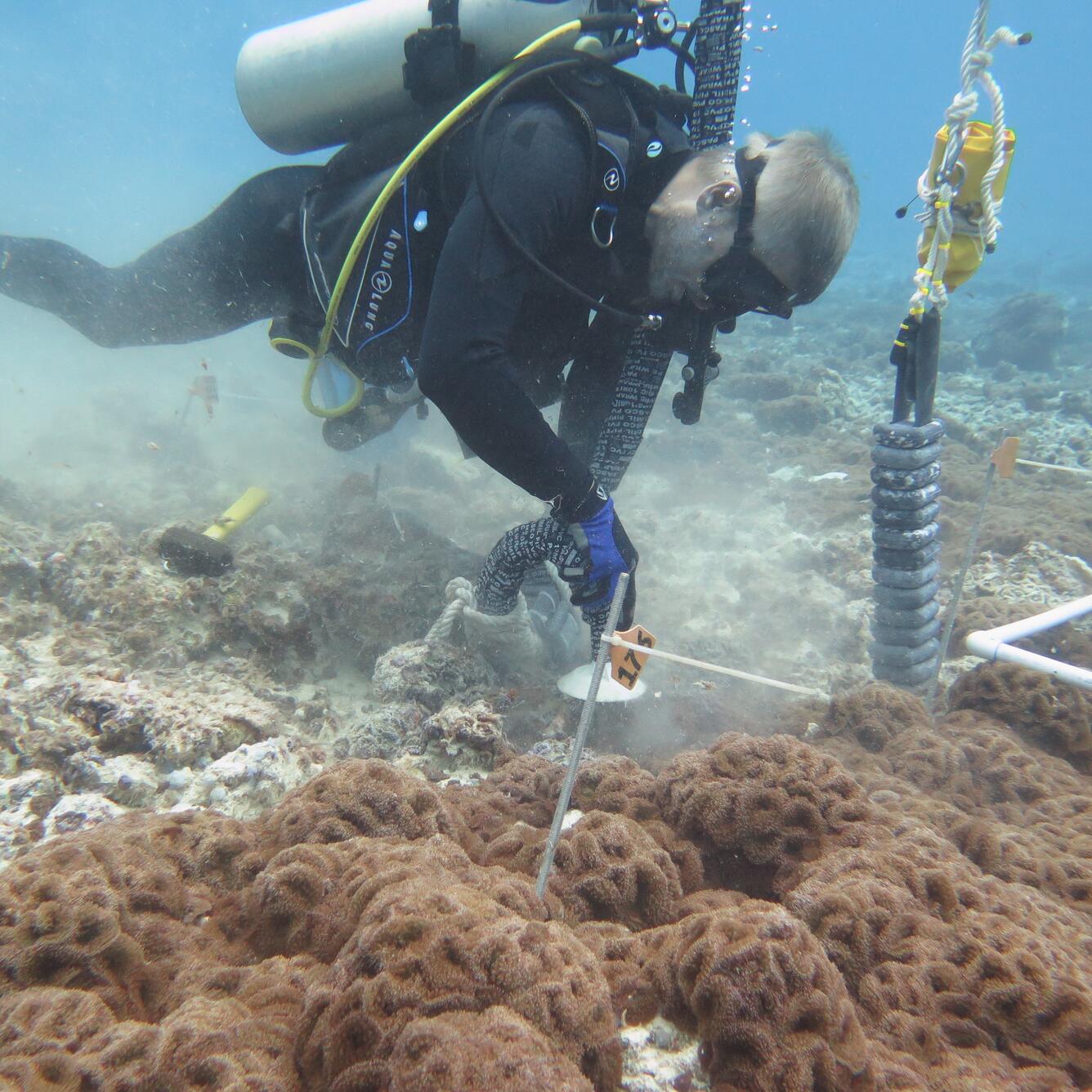New tools to manage invasive species that threaten Palmyra Atoll’s coral reefs
HONOLULU — Scientists found new methods that may help control an invasive anemone species threatening valuable coral reefs in the Central Pacific Ocean.
Dull pink cauliflower-like corallimorph anemones are overtaking coral reefs at Palmyra Atoll National Wildlife Refuge in the Central Pacific. To help remove the invasive species, which normally tend to thrive in degraded coral reef systems, USGS scientists and partners devised new methods using boiling-hot water or a biodegradable toothpaste-like compound that they found nearly eliminated corallimorphs from large areas of the reefs. They published their findings in the journal, Management of Biological Invasions.
“Coral reefs are economically, culturally and environmentally critical throughout the Pacific Islands, providing food and other resources to communities and maintaining a healthy ocean ecosystem,” said Thierry Work, a USGS scientist and the study’s lead author. “Natural resource managers could potentially apply these new controls on a large scale to contain corallimorphs at Palmyra Atoll.”
The scientists exposed harvested corallimorphs in the laboratory to boiling-hot water in one scenario and a toothpaste-like compound mixed with chlorine, citric acid or sodium hydroxide in another to assess the treatments’ ability to kill the specimens. They then tested both treatments on corallimorphs in the field by applying them to differently sized plots of corallimorph-infested reef. The field tests showed that:
-
A toothpaste-like compound mixed with sodium hydroxide was the most effective method, killing more than 90% of harmful corallimorphs over about 1,000 square feet in three days;
-
Seawater brought to about 180 degrees Fahrenheit using an underwater heater was also effective. This method killed 75% of corallimorphs over about 1,000 square feet three days after treatment; and
-
Neither treatment harmed nearby coral.
The new methods were found to be more deployable, scalable and effective than methods previously evaluated, including exposing corallimorphs to chlorine or removing shipwrecks upon which they easily grow. Additionally, the paste and hot water methods can be used to treat invasive species around other sensitive organisms to further protect the valuable ecosystem.
“Our new findings expand the set of tools available to manage invasive species that threaten sensitive corals over larger areas,” Work said. “They might also help combat other types of invasive marine plants that threaten coral reefs.”
The new study is published in the journal, Management of Biological Invasions. For more information about USGS coral reef research, please visit the USGS National Wildlife Health Center website.
Citation: Work TM, Breeden R, Rameyer RA, Born VR, Clark T, Raynal J, Gillies C, Rose J, Wegmann A, Kropidlowski S (2022) Invasive corallimorpharians at Palmyra Atoll National Wildlife Refuge are no match for lye and heat. Management of Biological Invasions 13, https://doi.org/10.3391/mbi.2022.13.4.02
# # #
USGS provides science for a changing world. Learn more at www.usgs.gov or follow us on Twitter @USGS, Instagram @USGS, or Facebook @USGeologicalSurvey.



